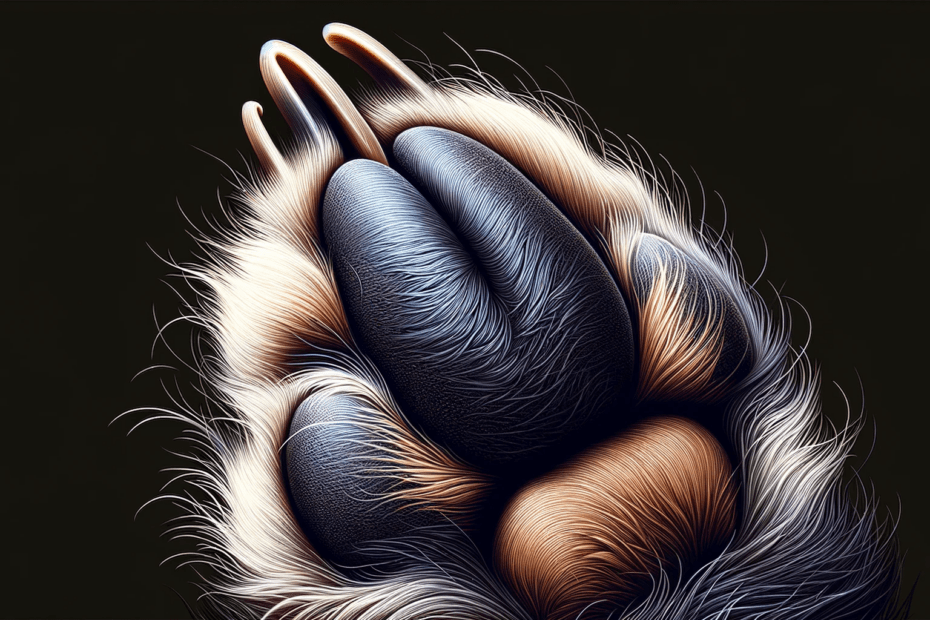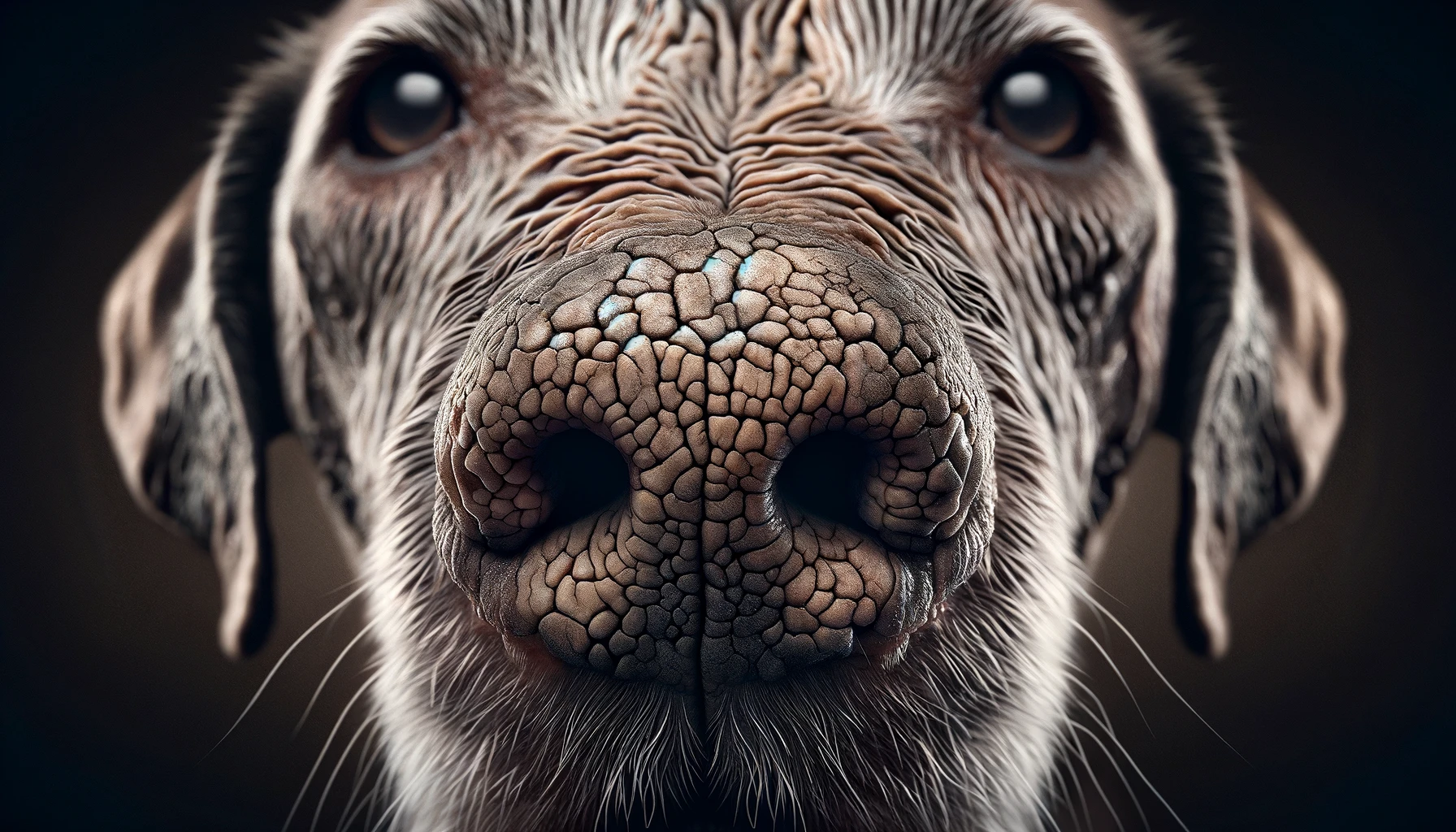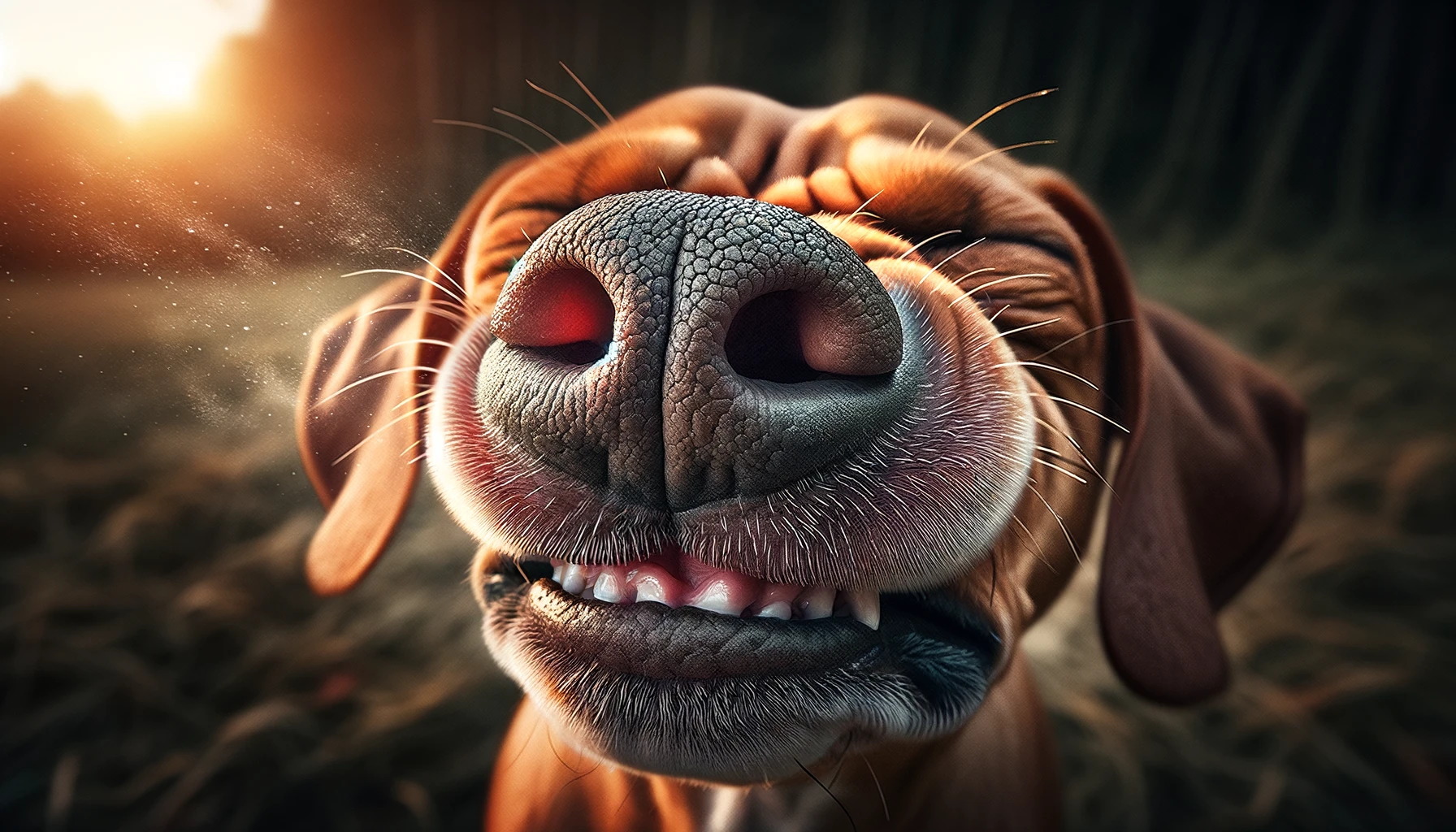Welcome to our informative article on why your dog’s nail may be black. Understanding the anatomy and pigmentation of a dog’s nail is crucial for pet owners.
In this article, we will explore the various factors that can contribute to black nails in dogs, including genetics, breed tendencies, and potential health conditions.
Additionally, we will provide essential tips for safely trimming and maintaining black nails.
Stay tuned to ensure your furry friend’s overall paw health and well-being.
Key Takeaways
- Black nails in dogs are the result of a higher concentration of melanin, a pigment produced by melanocytes.
- Not all dogs have black nails, as nail color can be influenced by genetic factors, age, and exposure to sunlight.
- Breeds such as Labrador Retrievers, Rottweilers, Doberman Pinschers, Great Danes, and Mastiffs are prone to having black nails and require regular nail trimming.
- Black nails can be challenging to trim as the quick is not visible, so using a grinder or seeking professional assistance is recommended to avoid cutting into the quick.
Anatomy of a Dog’s Nail
Frequently, understanding the anatomy of a dog’s nail is crucial in determining why it may appear black. The structure of a dog’s nail consists of several components. The outer layer, known as the nail sheath, is composed of keratin, a tough protein. Beneath the nail sheath lies the quick, which is a living part of the nail that contains blood vessels and nerves. The quick is responsible for supplying nutrients to the nail and aiding in its growth.
Nail growth patterns in dogs can vary depending on the breed, age, and overall health of the dog. Generally, nails grow continuously, similar to human hair or fingernails. However, the growth rate can differ among dogs. Some dogs may need their nails trimmed more frequently, while others may require less maintenance.
The color of a dog’s nail can also provide insight into its overall health. Black nails are common in many dogs, especially those with dark-colored coats. This is due to the presence of melanocytes, cells that produce melanin, which is responsible for pigment production. However, if a dog’s nail suddenly turns black or if there are other concerning changes, it is advisable to consult a veterinarian as it could indicate an underlying health issue.
Understanding the anatomy of a dog’s nail and its growth patterns can help dog owners maintain their pet’s nail health and detect any potential problems early on.
Melanin and Nail Color
The color of a dog’s nail, particularly when it appears black, is influenced by the presence of melanin, a pigment produced by melanocytes within the nail. Melanin is responsible for providing color to various parts of the body, including the skin, hair, and nails. In dogs, the amount and distribution of melanin determine the color of their nails.
Black nails in dogs are the result of a higher concentration of melanin in the nail tissue. The presence of melanin gives the nails a dark color, ranging from deep black to dark brown. However, it is important to note that not all dogs have black nails. The color of a dog’s nails can vary depending on their breed, individual genetics, and other factors.
Genetic factors play a significant role in determining the color of a dog’s nails. Different breeds have different genetic variations that influence the production and distribution of melanin in their nails. Some breeds are more prone to having black nails, while others may have nails that are lighter in color.
Other causes of nail discoloration in dogs can include infections, trauma, or underlying health conditions. If a dog’s nails suddenly change color or show signs of abnormality, it is recommended to consult a veterinarian for a proper diagnosis and treatment.
Understanding the role of melanin and genetic factors in nail color can help dog owners better appreciate the natural variations in their pet’s appearance.
Factors Affecting Nail Pigmentation
Various factors can influence the pigmentation of a dog’s nails. One of the main factors affecting nail pigmentation is genetics. Different breeds have different levels of melanin, the pigment responsible for nail color. For example, breeds with darker coats tend to have darker nails, while breeds with lighter coats may have lighter nails. Additionally, age can play a role in nail pigmentation.
Puppies often have lighter-colored nails that may darken as they grow older. Another important factor is exposure to sunlight. Sunlight can cause the nails to darken due to the stimulation of melanin production. This is especially true for dogs with light-colored nails. However, excessive exposure to sunlight can also cause the nails to become brittle and prone to cracking.
Regular nail trims also affect nail pigmentation. When nails are trimmed regularly, the outer layers of the nail are removed, revealing the lighter-colored inner layers. This can give the appearance of lighter nails over time. Additionally, regular nail trims help maintain nail health and prevent overgrowth, which can lead to discomfort and difficulty walking.
Breeds Prone to Black Nails
Certain breeds of dogs are more prone to having black nails than others. The color of a dog’s nails is determined by the amount of pigment in their nail beds. Breeds with black nails include Labrador Retrievers, Rottweilers, Doberman Pinschers, Great Danes, and Mastiffs, among others. These breeds tend to have more pigment in their nail beds, resulting in black nails.
Nail care for dogs with black nails is essential to maintain their overall health and prevent any potential issues. Regular nail trimming is crucial to prevent overgrowth and discomfort. It is important to be cautious while trimming black nails, as the quick (the blood vessel inside the nail) is not visible. Trimming small amounts at a time and using a sharp nail trimmer can help minimize the risk of cutting into the quick.
If a dog’s nails become too long, they can cause discomfort, affect their gait, and potentially lead to joint and posture problems. Regular nail trimming, along with providing appropriate surfaces for dogs to naturally wear down their nails, such as concrete or asphalt, can help keep their nails at a manageable length.
Health Conditions Linked to Black Nails
There are several health conditions that may be linked to black nails in dogs. Fungal infections can cause the nails to turn black, as can melanoma, a type of skin cancer. Additionally, trauma or injury to the nail can also result in discoloration.
It is important to monitor any changes in the color of your dog’s nails and consult with a veterinarian if you have concerns about their health.
Fungal Infections and Black Nails
Fungal infections are a common cause of black nails in dogs. These infections can occur when the dog’s nail hygiene is not properly maintained. Poor nail hygiene can lead to the growth of fungi, which can then invade the nail and cause discoloration.
It is important to regularly trim your dog’s nails and keep them clean to prevent fungal infections. Additionally, maintaining good overall nail health and color is essential. Regularly inspecting your dog’s nails for any changes in color, shape, or texture can help identify potential health issues early on.
If you notice that your dog’s nails have turned black, it is recommended to consult with a veterinarian for proper diagnosis and treatment. Prompt attention to fungal infections can help prevent further complications and discomfort for your furry companion.
Melanoma and Black Nails
Black nails in dogs can also be a sign of melanoma or other health conditions. Melanoma is a type of cancer that affects the cells that produce pigmentation in the body. In dogs, melanoma can develop in various parts of the body, including the nail bed. When melanoma affects the nails, it can cause black discoloration.
It is important for dog owners to be aware of this potential symptom and seek veterinary attention if they notice any unusual changes in their dog’s nails. Early detection is crucial for successful melanoma treatment. A veterinarian will perform a thorough examination and may recommend a biopsy to confirm the diagnosis.
Treatment options may include surgery, radiation therapy, or chemotherapy, depending on the stage and severity of the melanoma.
Trauma and Black Nails
In some cases, injuries or underlying health conditions can cause a dog’s nails to become discolored. Trauma, such as getting caught in a door or a nail getting ripped off, can result in blackened nails. When a dog’s nail is injured, the trauma can cause bleeding under the nail bed, leading to a black appearance.
Additionally, certain health conditions can also contribute to blackened nails. For example, fungal infections or bacterial infections can cause discoloration and thickening of the nails. It is important to monitor your dog’s nail health and seek veterinary attention if you notice any changes in color, texture, or shape.
Regular dog nail trimming and maintaining good overall nail health can help prevent and address potential issues.
Care and Maintenance of Black Nails
In order to maintain your dog’s black nails, it is important to prevent overgrowth by regularly trimming them. Trimming black nails can be challenging, as the quick, or blood vessel, is not visible.
To avoid cutting into the quick, it is recommended to use a grinder or seek the assistance of a professional groomer or veterinarian.
Preventing Nail Overgrowth
One must regularly maintain and care for their dog’s black nails to prevent overgrowth. Overgrown nails can cause discomfort and pain for dogs, as well as increase the risk of nail infections and other related health issues. To prevent overgrowth, it is important to trim your dog’s nails regularly.
Start by familiarizing yourself with the proper technique and tools for nail trimming, or seek the assistance of a professional groomer or veterinarian. Regular exercise on hard surfaces can also help naturally wear down the nails and prevent overgrowth.
Additionally, providing your dog with a balanced diet that includes essential nutrients for nail health maintenance can contribute to keeping their nails strong and less prone to overgrowth.
Trimming Techniques for Black Nails
To ensure proper care and maintenance of black nails, it is essential to employ precise trimming techniques. Black nails can be more challenging to trim compared to lighter-colored nails due to the difficulty in identifying the quick, which is the sensitive part of the nail that contains blood vessels and nerves.
To avoid causing pain or injury, it is crucial to use proper tools, such as a sharp, guillotine-style nail clipper designed specifically for dogs. Start by cutting a small portion of the nail at a time, gradually working towards the desired length. It is important to avoid cutting too close to the quick to prevent bleeding.
Regular trimming is necessary to prevent overgrowth and maintain the health and comfort of your dog’s black nails. By being cautious and adopting the correct techniques, you can ensure effective black nail care and avoid common nail trimming mistakes.
Trimming Black Nails Safely
Trimming a dog’s black nails requires careful technique and precision to ensure the safety and comfort of the pet. When it comes to trimming black nails, it is important to be cautious because the quick, which is the blood vessel inside the nail, is not easily visible. Cutting into the quick can cause pain and bleeding. To avoid this, it is recommended to use a bright light source to help identify the quick’s location.
Another important consideration is the type of nail trimmers to use. Guillotine-style trimmers and scissor-style trimmers are commonly used for trimming black nails. It is important to choose a trimmer that feels comfortable and provides good control.
To start the trimming process, it is recommended to make small, gradual cuts rather than trying to trim the nail all at once. This helps to minimize the risk of cutting into the quick. If the nail is overgrown, it is advisable to trim it in stages over a period of time to allow the quick to recede. Regular trimming can help prevent overgrowth and keep the nails at a manageable length.
When to Consult a Veterinarian
If you encounter any difficulties or concerns while trimming your dog’s black nails, it is advisable to seek guidance from a veterinarian. A veterinarian’s expertise can be invaluable in ensuring your dog’s nail health and preventing any potential complications. Early intervention is crucial when it comes to addressing nail-related issues in dogs.
There are several situations where consulting a veterinarian is necessary. If your dog’s nails are excessively long and causing discomfort or difficulty walking, a veterinarian can provide professional nail trimming services to alleviate the problem. Additionally, if you accidentally cut your dog’s quick while trimming their nails, causing bleeding and pain, a veterinarian can provide immediate care and alleviate any potential infection risk.
Furthermore, a veterinarian can examine your dog’s black nails for any signs of abnormalities or underlying health issues. Blackened nails can sometimes indicate serious conditions such as infections, tumors, or trauma. A veterinarian can perform a thorough examination, conduct necessary tests, and provide an accurate diagnosis.
Frequently Asked Questions
Can a Dog’s Nail Color Change Over Time?
Yes, a dog’s nail color can change over time due to various factors.
The color of a dog’s nails is primarily determined by the pigmentation in the nail bed. As a dog’s nail grows, it may undergo changes in pigmentation, resulting in a different color.
Factors such as age, breed, genetics, and health conditions can also influence nail color.
It is important to monitor any changes in nail color as it can sometimes indicate underlying health issues that require veterinary attention.
Are Black Nails More Common in Certain Dog Breeds?
Black nail prevalence in dogs can be influenced by genetic factors. Certain dog breeds are more prone to having black nails. The color of a dog’s nails is determined by the pigmentation in the nail bed.
Breeds such as Doberman Pinschers, Rottweilers, and Labrador Retrievers are known to have a higher likelihood of black nails. This is due to their genetic makeup and the presence of higher levels of pigmentation.
Can a Dog’s Diet Affect the Color of Their Nails?
The impact of a dog’s diet on nail health is an important consideration. While the color of a dog’s nails can be influenced by various factors, such as breed and genetics, diet can also play a role. However, it is important to note that the most common causes of black nails in dogs are typically due to natural pigmentation or trauma.
Therefore, while diet can contribute to overall nail health, it may not directly affect the color of a dog’s nails.
Are There Any Health Conditions That Can Cause a Dog’s Nails to Turn Black?
There are several health conditions that can cause a dog’s nails to turn black. One possible cause is a traumatic injury to the nail bed, which can result in bleeding and discoloration.
Another possible cause is a condition called hyperpigmentation, where the cells in the nail produce more pigment than usual.
While it may not always be possible to prevent black nails in dogs, regular nail trimming and maintaining good overall health can help minimize the risk.
How Often Should I Trim My Dog’s Black Nails to Keep Them at a Safe Length?
To maintain your dog’s black nails at a safe length, regular trimming is essential. The frequency of nail trims can vary depending on your dog’s activity level and the rate of nail growth.
Generally, it is recommended to trim your dog’s nails every 2-4 weeks. However, it is important to be cautious and use proper trimming techniques to avoid cutting into the quick, which can cause pain and bleeding.
Consult with a professional groomer or veterinarian for guidance on dog nail care and trimming techniques.
Conclusion
In conclusion, the black color of a dog’s nail is primarily due to the presence of melanin, a pigment responsible for the dark coloration. Various factors such as breed genetics and certain health conditions can also contribute to the nail’s pigmentation.
It is important for dog owners to understand the anatomy of their pet’s nails and to properly care for them, including safely trimming black nails. If there are concerns or difficulties with nail maintenance, consulting a veterinarian is advisable.






